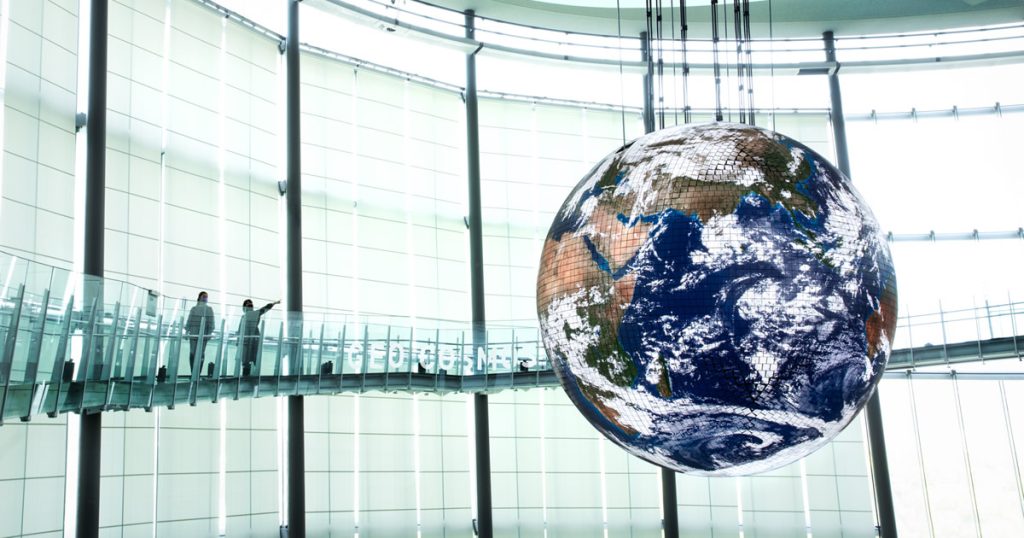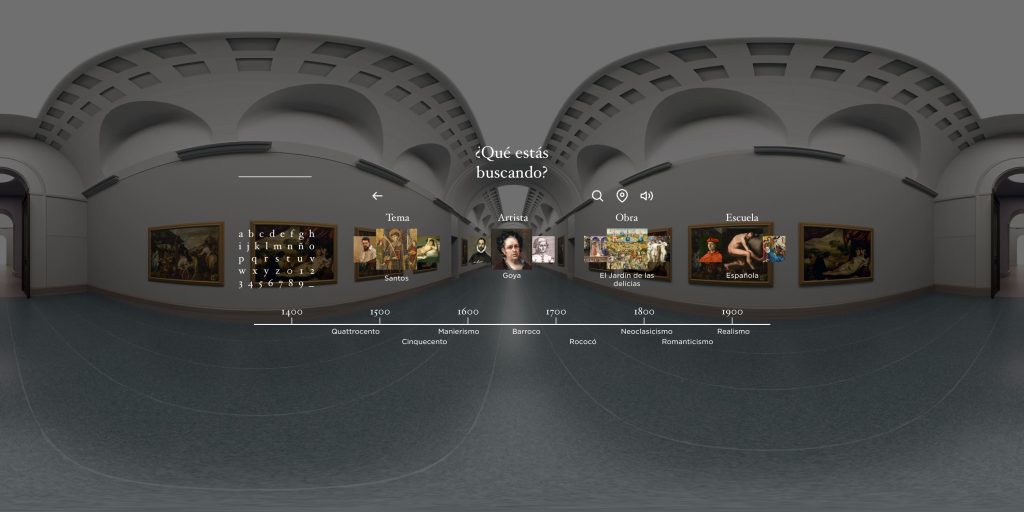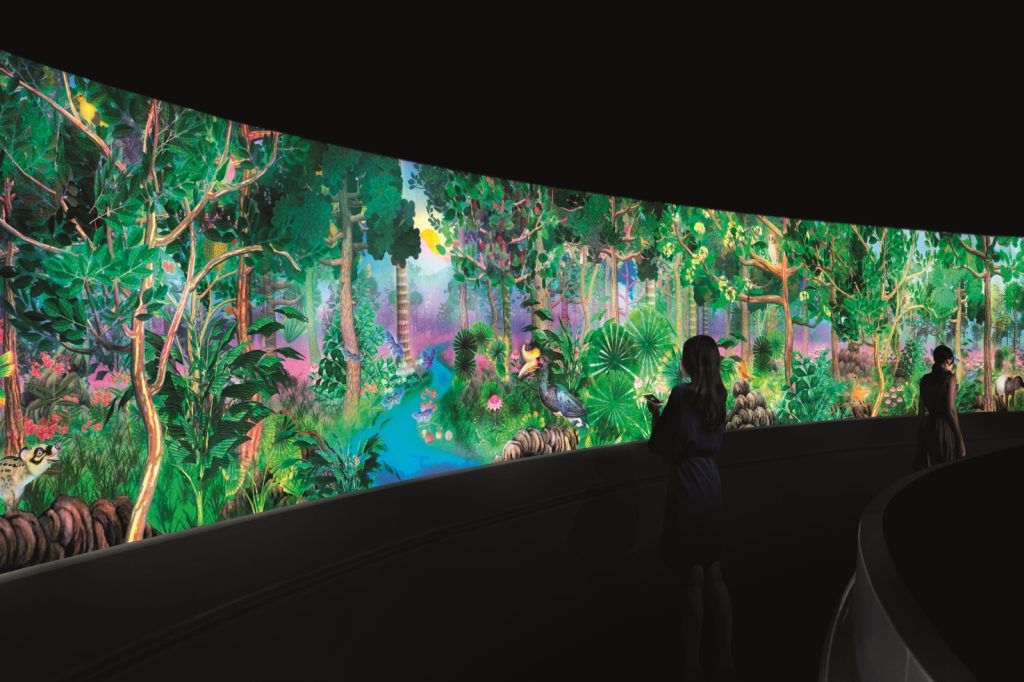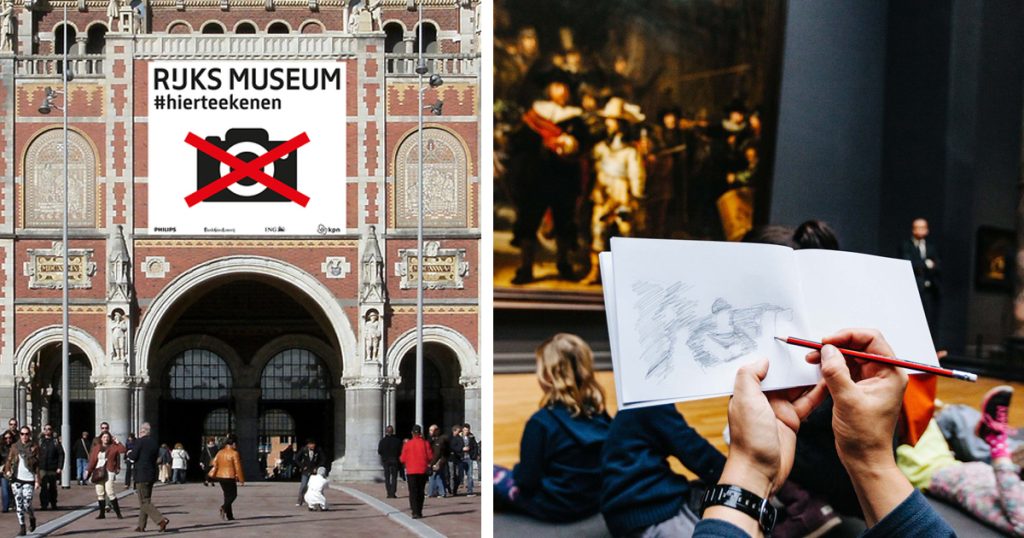The rapid technological advancement of the last decade has significantly transformed museums worldwide, reshaping how they engage with their visitors. Some believe that it has connected more visitors to museum exhibits and artifacts than ever before, while others disagree.
As culturally hyperlinked environments, museums are some of the world’s leading institutions in utilizing incredibly innovative and emerging digital tools for enhancing user experiences.
For example, Tokyo’s National Museum of Emerging Science and Innovation features the 6-meter OLED globe, Geo-Cosmos, to visualize near real-time changes occurring on Earth through geodata.
In 2019, the Prado Museum in Madrid introduced its first 360-degree immersive experience using virtual reality.
In 2016, the National Museum of Singapore launched its Story of the Forest exhibition as an immersive, larger-than-life digital installation that would, along with a smartphone app, provide detailed information about the animated animals among the illuminated trees.
In 2017, visitors to London’s Science Museum were able to immerse themselves in UK space travel history through a VR mission that reenacted British astronaut Tim Peake’s 400 km journey back to Earth, featuring a 12-minute video narrated by him while offering a unique view inside the Soyuz space capsule – an experience difficult to replicate without the use of technology (Charr, 2020).
Moreover, researchers at the Melbourne Museum discovered that Bluetooth technology can enhance visitors’ experiences by (consensually) tracking highly engaged visitors’ movement to provide them with personalized guides based on their visitation patterns (Oliveira & Barba, 2018).
However, opponents argue that although social media has sparked renewed interest into museums and garnered greater attention, attendance and revenue, it’s uncertain whether visitors are there to genuinely appreciate the art or make their next instagram reel (Daily Bruin Staff, 2016).
Consequently, Amsterdam’s Rijksmuseum created the #Startdrawing campaign to strongly discourage the use of cameras / mobile phones, encouraging guests to sketch the artworks rather than solely snapping pictures of them (Wanshel, 2015).
References
Charr, M. (2020, June 17). How technology is bringing museums back to life. MuseumNext. https://www.museumnext.com/article/how-technology-is-bringing-museums-back-to-life/
Daily Bruin Staff. (2016, January 20). The impact of social media on museums, art. Daily Bruin. https://dailybruin.com/2016/01/20/the-impact-of-social-media-on-museums-art
Oliveira, E. A. & Barba, P. D. (2018, December 11). How does learning happen in museums? Pursuit. https://pursuit.unimelb.edu.au/articles/how-does-learning-happen-in-museums
Wanshel, E. (2015, November 23). Museum ‘bans’ cameras and asks guests to sketch art instead. The Huffington Post. https://www.huffpost.com/entry/rijksmuseum-museum-bans-cameras-cell-phones-startdrawing_n_56532ff6e4b0d4093a585383







@kianapouya I am so glad you focused on museums. I’ve been all about the museums. We visited last week in Edinburgh and Glasgow. You highlight a really interesting thing from Amsterdam about discouraging photographs in the museum. I actually had a very different experience and I’ve been mowing this over since: I realized, as I was going through the national Gallery of Scotland, that for the artworks that really resonated with me I snapped a photo with my phone and then snapped a photo of the descriptive plaque next to it. I have a whole gallery of these because I may want to follow up and learn more about them last year. I actually ordered a printed canvas last year of my favorite painting in the gallery.
Hi @Michael,
I absolutely agree with your method. When I visited the Met and American Museum of National History (many years ago), I truly could not stop myself from snapping as many pictures of both the artwork and plaques as much as possible. My reasoning being that since I don’t live in NYC and probably won’t be returning for a long long time, I better savor this day as much as humanly possible. But it was a double-edged sword because the day became a blur and I have NEVER felt the urge to revisit those pictures since almost everything is online these days; and not to mention, the pictures’ camera angles and lighting are very poor, which ruins the experience since I’m not viewing the artwork in its best condition.
So, what I learned from that experience was to simply take pictures of ONLY the most influential pieces that actually make me do a double take (which is difficult since I’m always encapsulated by almost all of them), but I can look them up later (as you mentioned). I would much rather be in the moment than constantly have my phone in hand, in fear of missing out. It’s sort of akin to concerts, where it’s obviously the individual’s choice to experience the performance through their eyes or camera lens, but now I know I prefer the former.
Since technology is a tool, it’s the individual’s decision to utilize that tool in the best way possible, like taking pictures for future reference or letting them collect “dust” in the digital space. I chose to mention Rijksmuseum’s campaign (which only lasted 2 days as far as I know) because I thought it was a cool initiative and thought experiment to make visitors aware and slightly lesson their technology overuse. But regarding the question: Is technology distracting us away from the artworks? As with everything it’s complicated since it’s up to the individual to make the best of both worlds.
@kianapouya your thoughts and you reminded me of another key thing from my time in Scotland. We took the bus out to the town of Roslyn and went to Roslyn Chapel. They do not allow any photography inside of the chapel itself, which is filled with beautiful carvings and stone, but they give you a guide so you can look for some of the key carvings and super interesting details so there were no phones in the air and people waving about clicking their camera shutters. It was just so much fun. Like talking to people you didn’t know did you find this one or did you find that one? so fun!
Thank you so much @Michael for the name drop! I had never heard of Rosslyn Chapel but I just looked it up and WOW!!! It is breathtaking; that architecture is to die for!!! I will definitely keep it mind for future travels.
I wonder why photography isn’t allowed but it’s really not necessary when there’s plenty of photos of it around the web. The guide idea is really genius too; not only does it keep you grounded in the moment but you also have a reason to socialize with total strangers. Awesome!!! :)))
@kianapouya Wow, everything in this post is so cool, but I am especially drawn to the conversation around social media use within the org. This “problem” (if we can call it that) presents an interesting dichotomy– we want people to enter these spaces, but also want to control the experience they have and the way they appreciate the experience. It’s difficult to effectively control the experience of another person, and I find myself having a hard time falling on one side or the other on this argument. BUT, that being said, I love this #startdrawing campaign and think it’s truly innovative and just…. well, cool. Thanks for sharing!
Hi @bklint,
I totally agree with you! I don’t fall on any side of the argument either. I believe it’s the individual’s choice what type of experience they’d like to have — a longer, more meaningful one, or a casual, shorter one while on their phone.
Regardless, I find social media to be a great and free marketing tool for museums to attract more visitors, as long as it doesn’t upstage the actually artworks. In that case, I’m less inclined to visit that museum, or at least that exhibit/artwork, since I don’t want to accidentally photobomb anyone’s IG pics. So, I really appreciated Rijksmuseum’s response and would like to see more occasional #startdrawing campaigns throughout U.S. museums with free sketchbooks and pencils available by the door. That would be so cool!!! :))